| An Important Maserati Sale A forthcoming auction of important and exciting Maseratis. |
|
| August 15-16, 2003 Monterey Sports Car Auction DoubleTree Hotel at Fisherman's Wharf, Monterey, California, USA. |
|
| INCREDIBLE COACHBUILT MASERATI COLLECTION TO BE FEATURED AT RM AUCTIONS' ANNUAL MONTEREY SALE |  |
Houston Businessman Alfredo Brener To Sell His Assemblage of Rare Grand Touring Maseratis, August 15-16, 2003 |
|
| I would like to thank Terrance D. Lobzun of RM Auctions for his kind permission to reproduce the images and text from their fine catalogue. | |
|
LOT 442 1966 Maserati 3500GT Coupe with coachwork by MORETTI. |
|
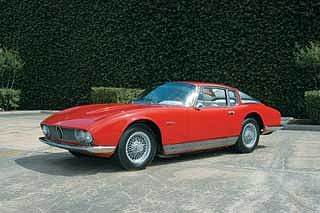 |
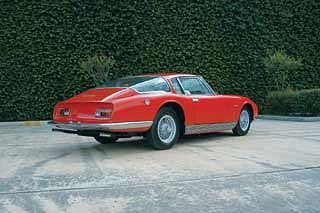 |
| CHASSIS No AM101.1858
220bhp 3,485cc. carbureted dual overhead camshaft inline six-cylinder engine, five-speed manual transmission, independent front suspension with coil springs, live axle rear suspension with semi-elliptical leaf springs, four-wheel hydraulically actuated disc brakes. Wheelbase 2,600mm (102.3"). |
|
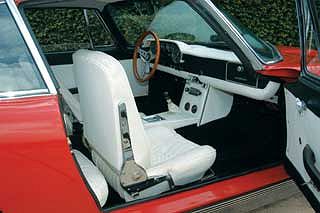 |
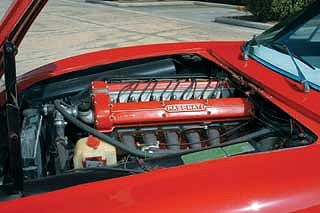 |
Signifying Morettiís fundamental change, in 1966, the firm displayed at the important Geneva motor show one of its few automobiles to be based on other than small and medium displacement production cars, this exceptionally pretty 2+2 coupť based on Maseratiís 3500 GT. Its fastback style with sloping tail, influenced by the aerodynamic work of Dr. Kamm, was handsome and sleek. The wide grille with quad headlights was imposing, an effect which was emphasized by the wide, flat air intake scoop on the hood. Its length was emphasized by ribbed sill moldings. In all, the effect was remarkably like that of the Iso Grifo which had made its appearance in 1965. |
|
|
LOT 443 1957 Maserati 3500GT Coupe with coachwork by CARROZZERIA TOURING. |
|
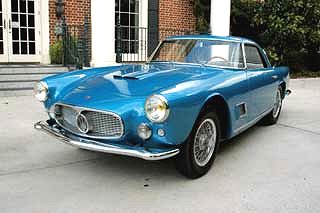 |
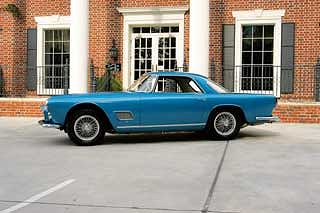 |
|
CHASSIS No AM101.002 220bhp 3,485cc. carbureted dual overhead camshaft inline six-cylinder engine, four-speed manual transmission, independent front suspension with coil springs, live axle rear suspension with semi-elliptical leaf springs, hydraulically actuated front disc, rear drum brakes. Wheelbase 2,600mm (102.3"). |
|
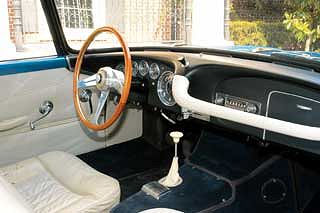 |
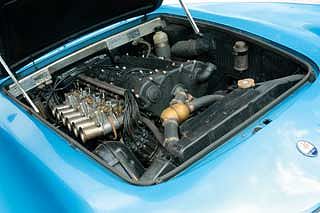 |
Pre-war 'Superleggera' coachwork for Alfa Romeo, particularly on the 8C 2900 chassis, and the aerodynamic full envelope bodies for BMWís 328, laid the groundwork for Touringís success following World War II. Felice Anderloniís death in 1948 during the companyís reconstruction, was untimely but not before he and Federico Formenti had created the Alfa Romeo Frecchia díOro and coupe and spider bodies for Ferrariís 166. |
|
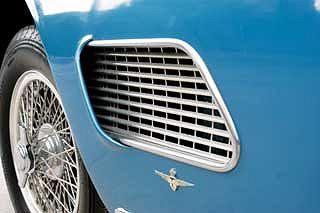 |
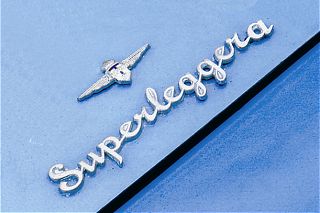 |
Maserati 3500 GT 002 was first delivered to Texas and was subsequently sold to its second owner in Chicago where it remained for over 30 years. It was acquired from the second owner by Mr. Alfredo Brener for his important collection of significant Maseratis. With low miles and a known history, it has never been restored and still has its original paint and interior. The marque experts associated with Mr. Brenerís collection believe that it has never been disassembled and is, except for normal service parts replacement, exactly as it was completed in 1958 by Touring and Maserati. Both the paint and interior are in good, sound condition with the elegant patina which only continuous sympathetic care and attention can confer. It is reported to drive very well, and has been carefully checked and serviced. It is fitted with chromed wire wheels and the transmission is still the original four-speed with its characteristic crank-shaped lever. Significant differences from the Geneva Show car reveal the evolution that was underway from prototype to production. The vent windows and inset side marker lights of the prototype have been removed, but the batteries are still located in the engine compartment. |
|
|
LOT 444 1957 Maserati 3500GT Spyder with coachwork by FRUA. |
|
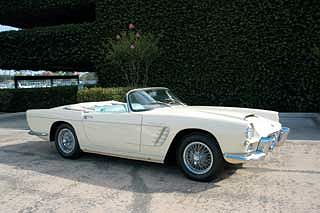 |
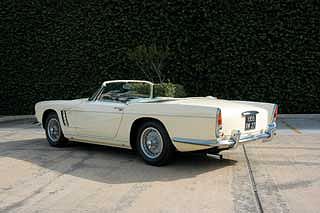 |
|
CHASSIS No AM101.268 220bhp 3,485cc carbureted dual overhead camshaft inline six-cylinder engine, five-speed manual transmission, independent front suspension with coil springs, live axle rear suspension with semi-elliptical leaf springs, hydraulically actuated front disc, rear drum brakes. Wheelbase 2,600mm (102.3"). |
|
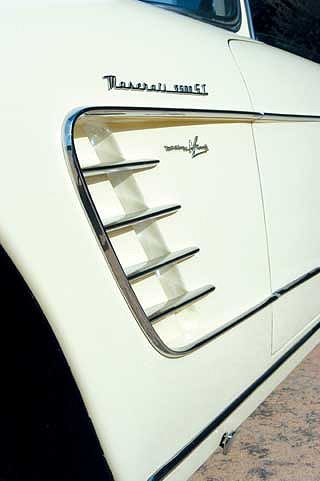 |
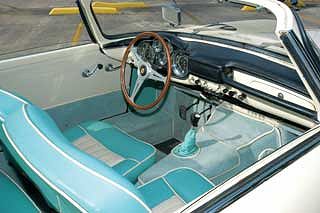 |
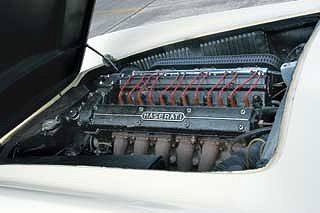 |
|
In May 1961, Road & Track tested a Maserati 3500 GT Spyder, commenting extremely favourably on its performance, handling and comfort. They compared it favourably with the Ferrari 250 GT they had tested a year before, noting particularly that the Maseratiís acceleration was nearly as fast as the Ferrari which had the benefit of a 4.57 rear axle compared with the Maseratiís 3.54. R&Tís testers also noted that the Maseratiís brakes, even though still fitted with drums on all four wheels, were impressive in both their stopping power and their resistance to fade. |
|
| NEXT PAGE: LOTS 445, 446 and 447, MORE FROM THE BRENER COLLECTION. |
 |
||
|
To enter Enrico's Maserati Pages CLICK HERE! Copyright: RM AUCTION INC. - © 2003. All rights reserved. |